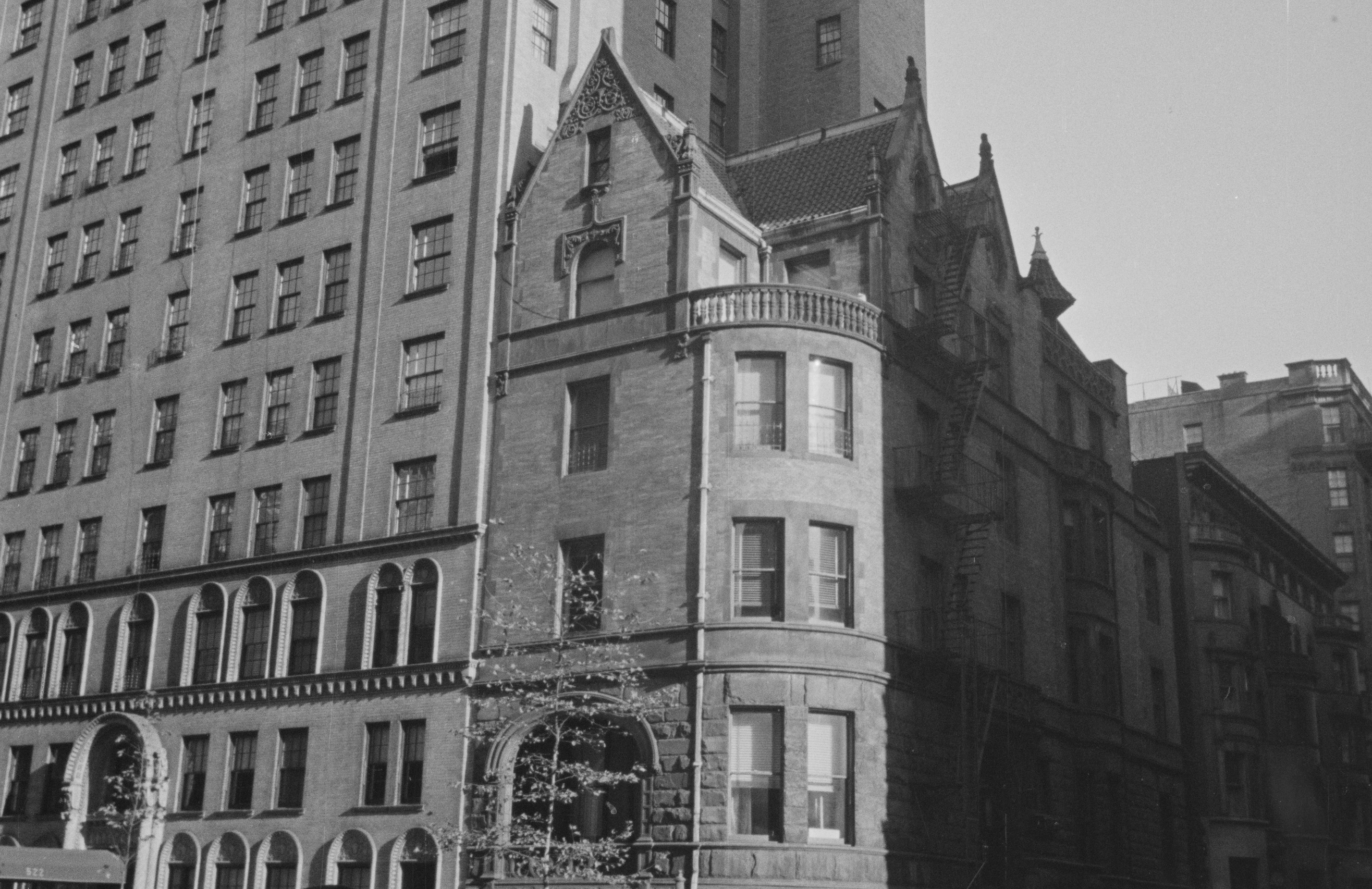
520 West End Avenue
by Tom Miller
In the 1890s, homes and mansions on the Upper East Side of Manhattan were built in refined, conservative architectural styles. Italian Renaissance and French Gothic residences oozed correctness and formality.
Across the park, however, things were a bit looser. On the Upper West Side Romanesque brownstone, fortresses sprouted gargoyles, Celtic designs and stained glass. Stoops that rose in disciplined attention on the East Side here turned to the left or right or split down the middle. Flemish Revival churches and businesses lent a quaint, historic atmosphere to the area. Even the conservative Real Estate Record and Guide in 1890 made note of the difference, using West End Avenue as its example.
“No Avenue in New York City is lined with more attractive houses for a distance of one mile north of 70th street than West End Avenue. Fifth and Madison, though adorned with residences, in many cases more costly, display row after row of brown stone fronts of the older type; houses that, architecturally speaking, are devoid of originality, framed as they are on a general plan of a somewhat stereotype character.”
Instrumental in the developing personality of the Upper West Side was speculative developer Richard Goodman Platt and architect Clarence Fagan True. The two would work together several times and True would go on to design dozens of houses and other buildings in the neighborhood.
In November 1891, Platt purchased the corner lot at West End Avenue and 85th Street from Robert and Joseph Gordon. The deed restricted building on the plot to no more than two residences. Platt intended however, to build just one monumental house on the 27 foot-2 inch by 100-foot site.
“No Avenue in New York City is lined with more attractive houses for a distance of one mile north of 70th street than West End Avenue…”
That same month The Real Estate Record and Guide reported that architect Clarence True had designs for a house of “red stone and Tiffany brick.” Two months later, he filed plans for the $40,000 structure.
Construction began on February 16, 1892 and less than three weeks later, on March 7; Platt sold the work-in-progress to cotton broker John Burgess Leech. Leech paid $60,000 and was obligated to complete the construction to the architect’s specifications.
The house rising at 520 West End Avenue would be one of the largest houses on the Upper West Side. But with nine children and a wife, the spacious home made sense for Leech. The broker was born in London and immigrated to Memphis, Tennessee in the 1850s where he became a partner in W. A. Goodwyn, cotton merchants.
Oddly enough, the Southern firm opened a branch office in New York in the midst of the Civil War. When things quieted down, Leech moved to New York in the 1870s, eventually working on his own. He became a member of the New York Cotton Exchange, the Coffee Exchange and the Consolidated Exchange. The New York Sun would later note that during his career “he acquired a large fortune.”
The home was completed on November 26, 1892 and the deed, as was typical with upper-class families in the 19th century, was listed in the name of Leech’s wife, Isabella M. Leech. The Leech family moved from the Hotel Bristol into the enormous home, which was as picturesque as it was impressive.
The entrance, above a side-hugging stoop, sat within a Romanesque arch with an ornate wrought-iron fan. True borrowed from Romanesque, Elizabethan and Gothic Revival styles to create a romantic, fairy-tale castle of rough-cut sandstone, tan brick and orange roof tiles. A curved corner semi-turret, multiple gables and balconies resulted in a solid yet delightful structure.
Leech suffered from diabetes and only three years after moving into No. 520 West End Avenue, his health failed. Eventually, his condition worsened, developing into what contemporary doctors called “consumption.” He died in his bedroom in May 1897 at 66 years old.
Isabella Leech stayed on in the house until 1905 when she leased it to Mary W. Somerville who converted it into the Gordon-Winston School for young girls. The fifteen-year old house would never be a private residence again. In 1907, the teacher purchased the building from Mrs. Leech.
Here Mary Somerville lived, with the other teachers, and up to sixteen boarding students. The American Educational Review in 1909 noted, “This school provides a beautiful home, and thorough preparation for colleges. The wonderful advantages of the city are made a part of the daily life through environment and association.”
The same year an ad in the New York Tribune described “School for young ladies. To specialize: music, art, languages literature, history, etc. Every care and protection given while there is perfect freedom from the discipline of School Life. Students introduced to what is best socially and educationally.” The advertisement stressed that the house had steam heat and a hot water plant.
The court ruled in his favor, opening the door to the demolition of No. 520 West End Avenue.
In 1909, Mary Somerville transferred ownership to Virginia millionaire James Overton Winston. Quickly, the exclusive Gordon-Winston School disappeared and Winston converted the house to eight apartments and a doctor’s office in the basement. By 1922, the American Waldensian Aid Society had its offices here. The organization collected funds for the aid of the Waldensian Church in Italy for “evangelistic, institutional and educational work.”
Winston’s interests were in business and definitely not in architectural preservation, especially of an aging white elephant sitting on a potentially valuable corner lot on a major New York avenue. His millions had been made constructing bridges, dams, railroads and reservoirs. He noticed that many of the great single-family residences of the Upper West Side were being demolished to be replaced with modern apartment buildings.
In 1931, he filed suit against the original deed restricting construction on the lot to no more than two single-family homes. The court ruled in his favor, opening the door to the demolition of No. 520 West End Avenue.
But the Great Depression halted his plans. Winston lost the property to foreclosure a year later. Through a series of subsequent owners, the hulking structure remained a multifamily residence and, at its lowest point during World War II, was a flophouse of 20 furnished rooms and a “community kitchen.”
Today No. 520 West End Avenue remains apartments. The parlors and bedrooms that Isabella Leech decorated with hand-painted Japanese fans and potted palms in great majolica pots are now stripped of most architectural interest. But the exterior remains nearly untouched; once among the grandest of the Upper West Side mansions.
Tom Miller is a social historian and blogger at https://daytoninmanhattan.blogspot.com/


